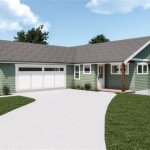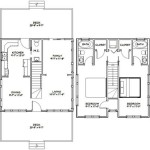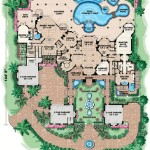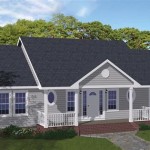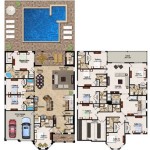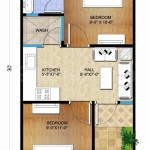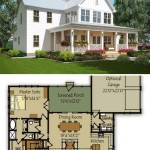```html
Canadian Home Plans And Designs: Understanding the Essentials
Canadian home plans and designs reflect the country's diverse geography, climate, and cultural influences. From the rugged coastlines of British Columbia to the sprawling prairies of Saskatchewan and the historic landscapes of Quebec, homes across Canada are designed to be both functional and aesthetically pleasing. A careful consideration of local conditions, building codes, and lifestyle preferences is critical when selecting or developing a home plan.
This article explores key aspects of Canadian home plans and designs, covering architectural styles, common design elements, energy efficiency considerations, adaptation to regional climates, and the importance of adhering to building codes and standards. It is intended to provide a comprehensive overview for individuals considering building or renovating a home in Canada.
Architectural Styles in Canadian Home Design
Canada boasts a wide range of architectural styles, each with its own distinctive characteristics. These styles often reflect the historical periods during which they emerged and the cultural backgrounds of the settlers who built them. Understanding these styles can provide valuable insights into the design principles that underpin Canadian homes.
One prominent style is the Victorian, characterized by ornate details, asymmetrical facades, bay windows, and steeply pitched roofs. These homes, prevalent in older neighborhoods across the country, often feature intricate woodwork and decorative trim. Another significant style is the Arts and Crafts movement, which emphasizes natural materials, simple lines, and handcrafted details. Arts and Crafts homes typically feature low-pitched roofs, wide eaves, and exposed rafters.
The prairie style, particularly common in the western provinces, is characterized by horizontal lines, flat or gently sloping roofs, and large windows that maximize natural light. These homes are designed to blend seamlessly with the surrounding landscape. In Quebec, the traditional French Canadian style is characterized by steeply pitched roofs, dormer windows, and stone or brick facades. These homes often feature symmetrical designs and a sense of solidity.
Modern and contemporary styles have also gained popularity in recent years. These homes often feature clean lines, open floor plans, and an emphasis on energy efficiency. They may incorporate sustainable materials and technologies to minimize their environmental impact. Post-and-beam construction, often utilizing locally sourced timber, can be found in both traditional and modern adaptations.
Key Design Elements of Canadian Homes
Beyond architectural style, certain design elements are commonly found in Canadian homes. These elements reflect the practical needs of homeowners and the desire to create comfortable and functional living spaces. These elements often adapt to the particular climate and regional needs.
One important design element is the incorporation of a mudroom or entryway. This space provides a designated area for removing and storing outerwear, shoes, and other items, helping to keep the rest of the home clean and organized, especially during the winter months. Mudrooms often include built-in storage, seating, and durable flooring.
Another key element is the design of the kitchen. Canadian kitchens are often designed to be both functional and social spaces. Open floor plans that connect the kitchen to the living and dining areas are common, allowing for easy interaction and entertaining. Kitchen islands, ample counter space, and efficient layouts are also important considerations.
Fireplaces are a common feature in Canadian homes, providing both warmth and ambiance. Wood-burning fireplaces, gas fireplaces, and electric fireplaces are all popular options. Proper ventilation and adherence to safety codes are essential when installing a fireplace. High-efficiency fireplaces are often favored to reduce energy consumption.
Large windows and well-designed lighting systems are crucial for maximizing natural light and creating a bright and cheerful interior. In regions with long winters, maximizing natural light can have a significant impact on mood and well-being. Skylights, strategically placed windows, and energy-efficient lighting fixtures can all contribute to a well-lit home. The placement of south facing windows is generally preferred to maximize sunlight exposure during the winter seasons.
Basements are also a common feature in Canadian homes, providing additional living space, storage, or utility areas. Finished basements can be used as recreation rooms, home offices, or guest suites. Proper insulation and waterproofing are essential to prevent moisture problems and ensure a comfortable environment.
Energy Efficiency and Climate Considerations
Energy efficiency is a critical consideration in Canadian home design, driven by both environmental concerns and the desire to reduce heating and cooling costs. Canada's diverse climate, with its cold winters and hot summers, necessitates the use of energy-efficient building materials and design strategies. Government incentives and building codes promote the adoption of energy-efficient practices.
Proper insulation is essential for maintaining a comfortable temperature and reducing energy consumption. Walls, roofs, and floors should be adequately insulated to minimize heat loss in the winter and heat gain in the summer. Various types of insulation are available, including fiberglass, spray foam, and cellulose, each with its own R-value (a measure of thermal resistance).
Energy-efficient windows and doors are another important consideration. Double-paned or triple-paned windows with low-E coatings can significantly reduce heat transfer. Weatherstripping and sealing gaps around windows and doors can also help to prevent drafts and improve energy efficiency. Government energy-efficiency rating programs, such as Energy Star, provide consumers with information on the energy performance of windows and doors.
High-efficiency heating and cooling systems can also significantly reduce energy consumption. Furnaces, air conditioners, and heat pumps should be selected based on their energy efficiency ratings. Programmable thermostats can help to optimize energy usage by automatically adjusting the temperature based on occupancy and time of day. Geothermal and solar heating systems are becoming increasingly popular as sustainable alternatives.
Passive solar design strategies can also be employed to maximize the use of sunlight for heating and lighting. Orienting the home to maximize southern exposure, incorporating large windows on the south side, and using thermal mass materials to store heat can all help to reduce energy consumption. Careful consideration of shading and ventilation can help to prevent overheating in the summer.
In earthquake-prone regions like British Columbia seismic considerations are critical. Designs must incorporate structural elements that resist ground motion and minimize the risk of damage. This often involves reinforced foundations, shear walls, and flexible connections.
Home designs in coastal areas must account for high winds, salt spray, and potential flooding. Materials should be chosen for their durability and resistance to corrosion. Elevated foundations and storm shutters may be necessary in areas prone to severe weather.
Adherence to Building Codes and Standards
Adhering to building codes and standards is essential when building or renovating a home in Canada. Building codes are designed to ensure the safety and well-being of occupants and to protect the environment. Compliance with building codes is required by law and is typically enforced by local municipalities.
The National Building Code of Canada (NBC) provides a comprehensive set of regulations for the design and construction of buildings. The NBC covers a wide range of topics, including structural integrity, fire safety, electrical safety, plumbing, and accessibility. Provincial and territorial building codes are based on the NBC but may include additional requirements specific to local conditions.
Building permits are typically required for new construction, renovations, and additions. The permit application process involves submitting detailed plans and specifications to the local building department for review. Inspections are conducted at various stages of construction to ensure compliance with the building code. Failure to obtain the necessary permits or comply with the building code can result in fines, delays, and even the demolition of non-compliant structures.
In addition to building codes, various industry standards and best practices should be followed. These standards cover topics such as energy efficiency, indoor air quality, and sustainable building practices. Consulting with qualified professionals, such as architects, engineers, and contractors, can help to ensure that your project meets all applicable requirements.
Understanding the scope and application of the building code is crucial for any homeowner undertaking a construction project. Ignoring the building code not only puts occupants at risk but can also lead to significant financial penalties and legal liabilities.
```
Canadian House Plans Home Floor Designs The Designers

Top 100 Most Popular Canadian House Plans Drummond

Top 100 Most Popular Canadian House Plans Drummond

Canadian House Plans Home Floor Designs The Designers

Top 100 Most Popular Canadian House Plans Drummond

Top 100 Most Popular Canadian House Plans Drummond

Canadian House Plans Home Floor Designs The Designers

Country Style House Plan 6344 Canadian

House The Canadian Plan Green Builder Plans

Canadian House Plans Edesignsplans Ca

